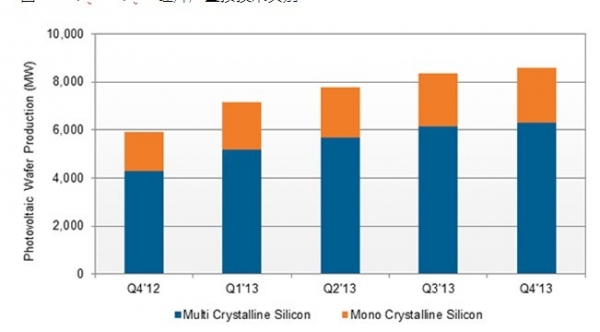Abstract According to NPDsolarbuzz's latest quarterly report on polysilicon and wafer supply chain, wafer production will decline by 15% in 2012, and in 2013 it is expected to increase by 19% to over 30GW, returning to 2011 levels. Industry average wafer capacity utilization pre-...
According to NPD Solarbuzz's latest quarterly report on polysilicon and wafer supply chain, wafer production fell by 15% in 2012, and is expected to increase by 19% to 30GW in 2013, returning to 2011 levels. The industry's average wafer capacity utilization rate is still expected to be below 60%, but the market share is concentrated in leading manufacturers. At the same time, the price of silicon wafers has stopped falling, but it has not rebounded significantly. Therefore, the profitability of wafer manufacturers still needs to overcome the challenges. 
Polycrystalline silicon wafers are expected to continue to dominate the wafer market in the short term, but high-efficiency solar modules based on monocrystalline silicon wafers are still favored by downstream projects with limited installation space and are more expensive than standard polycrystalline components due to their high efficiency. In particular, the rapid growth in demand in the Japanese market has also increased the demand for high-efficiency single crystal modules.
NPD Solarbuzz analyst team deputy general Charles Annis said: "From the policy incentives of the Japanese PV market, the demand for the Japanese PV market will exceed 10% of the global market share in 2013. Due to strong demand for roof installation projects in the Japanese market, large Ground installation projects are limited by land resources, so the Japanese market has become the main driver of demand for monocrystalline components."
However, in order to increase the market share of monocrystalline silicon wafers, it is necessary to improve the production of single crystal silicon rods and further improve the efficiency of components. Charles Annis added: "Polysilicon wafer manufacturers continue to improve the ingot process and develop new high-efficiency polysilicon wafers. The efficiency of high-efficiency polysilicon wafers sold by leading silicon wafer manufacturers is now close to 18%, which is equivalent to the efficiency range of monocrystalline silicon wafers. The lower limit, which also maintains the competitiveness of polycrystalline products."
In the long run, N-type monocrystalline silicon wafers and those enhanced monocrystalline silicon wafers based on high-efficiency cell processes have the potential to reduce the total cost per watt of components and increase the growth rate of the monocrystalline silicon wafer market. Assuming these technologies are successful, NPD Solarbuzz expects monocrystalline battery production to grow faster than polycrystalline batteries in 2015, gaining more end-market applications and higher market share.
Stainless Steel Hex Bolts,Hexagon Screw Head,Heavy Hex Bolt,Hex Bolt
Shaoxing Grace International Trade Co.,Ltd , https://www.shaoxinggrace.com